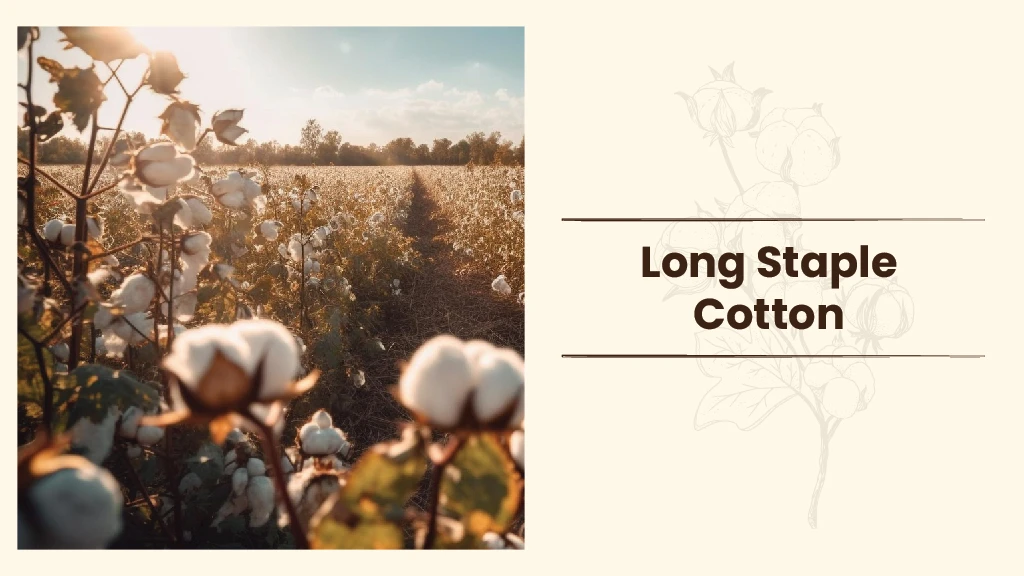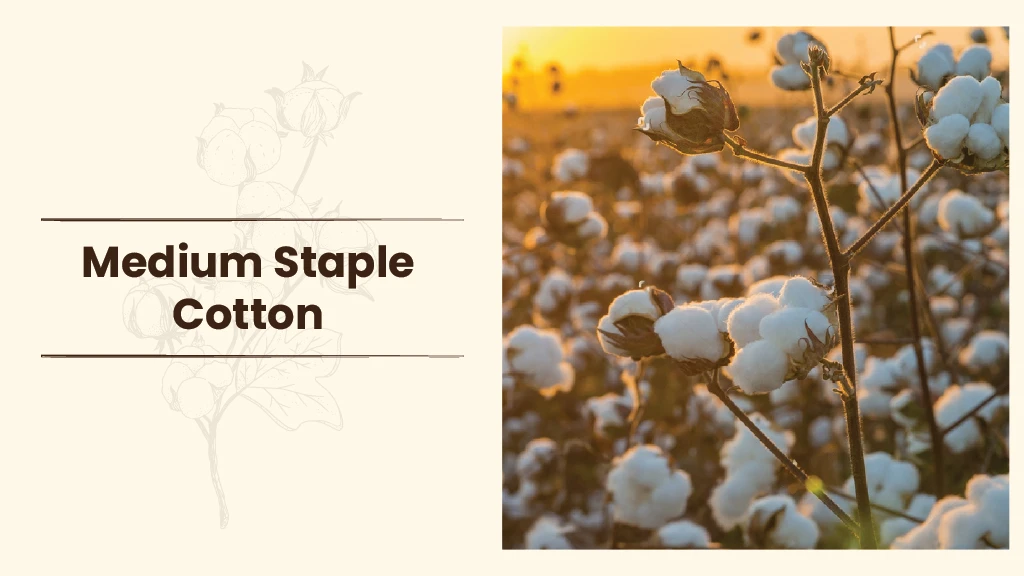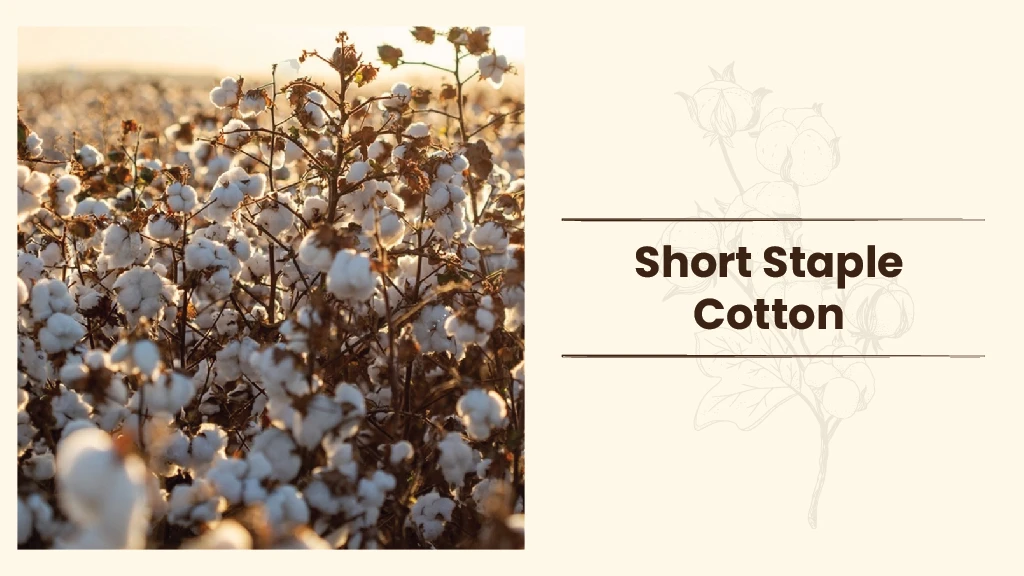Different Types of Cotton: The Cultivation & Processing Method

Table Of Contents
- Introduction
- Different Types of Cotton in India
- Organic Cotton
- Cotton Cultivation in India
- Cotton Processing in India
Introduction
Cotton is one of the most widely cultivated and important cash crops in India. It plays a significant role in the agriculture sector of the Indian economy. It is a major source of livelihood for around 6 million farmers, and nearly 40 – 50 million earn their livelihood from cotton processing.
India is divided into three cotton zones, viz., North Zone, Central Zone, and South Zone. These three zones consist of 10 major cotton-producing states.
India is the world's second-largest producer of raw cotton after China, and its diverse climate and geographical conditions make it suitable for growing different types of cotton.
Different Types of Cotton in India
Cotton is generally categorised into three broad types based on their length, strength, fibre structure, and species.
Based on the length, strength, and fibre structure, cotton is classified into three types: long staple, medium staple, and short staple. Whereas, based on the cotton species, it is classified into Gossypium hirsutum (Upland Cotton) and Gossypium barbadense (Extra-Long Staple Cotton or Pima Cotton). With the adoption and spread of organic farming in India, organic cotton is also grown in some parts of the country.
Let's discuss the broad variety of cotton based on its length, strength, and fibre structure in detail.
Long Staple Cotton

Long staple cotton has the longest fibre, which is between 24 mm and 27 mm in length. Thus, it has a long, fine, and shining fibre that is widely used to produce high-quality and fine-textured fabrics and goes for the best price. After India's independence, there has been rapid growth in the production of long-staple cotton. Almost half of the total cotton produced in the country accounts for long-staple cotton. This type of cotton fibre is widely grown in Punjab, Haryana, Maharashtra, Madhya Pradesh, Tamil Nadu, Andhra Pradesh and Gujarat.
Medium Staple Cotton

The fibre length of the medium staple cotton is between 20 mm and 24 mm. Thus, its length is smaller than that of long-staple cotton. The medium staple cotton accounts for almost 44 per cent of the total cotton produced in the country. It is the second most commonly used fibre in India after long-staple cotton and is used for producing high-quality fabrics. It is available at a reasonable price. The major producers of medium staple cotton are Rajasthan, Punjab, Uttar Pradesh, Tamil Nadu, Karnataka and Maharashtra.
Short Staple Cotton

It is an inferior cotton which has the shortest fibre. Its length is less than 20 mm. It is used to produce inferior clothes and is available at a low price. It has a share of around 6% of the total cotton produced in the country. The primary producers of short staple cotton are Uttar Pradesh, Rajasthan, Andhra Pradesh, Haryana and Punjab.
Organic Cotton
It is a type of cotton which is cultivated using eco-friendly methods. The cultivation doesn't involve the use of synthetically created chemicals, such as pesticides, defoliants, growth regulators, etc., or fertilisers. Organic cotton has a share of around 1% of the total cotton produced in the country. Thus, it is produced in low amounts but accounts for 56% of the total organic cotton production worldwide.
Cotton Cultivation in India
The cotton production in India is done by following various steps which are discussed below:
Climate Requirements
Cotton is grown in tropical and subtropical regions. For better growth in field conditions, a minimum temperature of 15°C is required. Vegetative growth requires an ideal temperature of 21°C to 27°C. However, it can tolerate temperatures up to 43°C.
Plantation
Land preparation is the first step in cotton production. It involves creating furrows in the soil. The planting season is from early February to late June. The soil needs to be warm before planting, which can be done with direct water irrigation and furrows. Once the soil is ready, farmers need to plant the cotton seed in it. Farmers can use heavy machinery with tractors for planting and land preparation, such as cultivators, harrows, land levelers, etc.
Growing
The next step is to examine the growth of the seeds. The seed sprouts up from the soil in one to two weeks of plantation. After 8 to 10 weeks, the plant blooms and grows 2 to 5 feet. In 3 days, the flower pollinates itself and changes colour to pinkish red from creamy white. The flower withers and falls off after this procedure, and the developing boll is left behind. After that, the cotton boll forms after 10 weeks.
Boll Opening
The cotton bolls open in the third step so that the dry white bolls can evaporate, clean the fibre, and fluff it up. They open after 50 to 70 days of bloom. Once the process is complete, the cotton crops are ready to be harvested.
Picking
This step requires farm machinery to remove the fibre from the crop. In the picking process, the cotton picker or cotton harvesting farm machinery is used to harvest the cotton plant. This process takes place during the harvesting season, which is from July to October.
Cotton Processing in India
After the picking process, the cotton is dumped on the ground and then compressed with a hydraulic module builder. The modules are then left in the ground for storage. The further steps involved in cotton processing are:
Ginning
In this process, the cotton is transported to the cotton gin, where it is dried and cleaned. After that, the fibre is mechanically separated from the cotton. It is done with the help of gin, which is a machine with circular saws widely used to separate the raw cotton fibre through ribs. The ribs are used to prevent the cottonseed from passing. Thus, it helps to separate the fibre from the cottonseed carefully.
Spinning
It is an important step which involves the transformation of cotton fibres into yarn. The cotton fibre is passed through various steps to gain uniformity.
- The first step involves the straightening and cleaning of the cotton fibres.
- The second step involves the blending of cotton fibres, producing a consistent mixture.
- In the third step, the fibres are fed into the spinning machines, which draw out and twist the fibre and form yarn.
- Lastly, the produced yarn is twisted into spools or bobbins, making it ready for weaving or knitting.
Weaving/Knitting
The spinning process plays an important role in producing fabric through weaving or knitting. In the weaving process, the yarns are interlaced in a crisscross pattern to produce a woven fabric. Meanwhile, in the knitting process, the yarn loops are interlocked to develop a knitted fabric.
The weaving and knitting process is performed according to the desired fabric characteristics and the intended application.
Dyeing and Finishing
After the weaving or knitting process, the cotton fabric is taken for dyeing and finishing to improve its texture, visual appearance and longevity.
The dyeing process involves immersion dyeing, printing or digital printing, which infuses the fabric with bright colours or complex patterns.
Garment Manufacturing
It is the final stage of the cotton manufacturing procedure, which involves the production of garments and textile products. At this point, the cotton fabric is cut into specific patterns and carefully stitched together to form a wide variety of garments such as jeans, shirts, dresses, etc.
Frequently Asked Questions On Different Types of Cotton: The Cultivation & Processing Method
1. Which type of soil is best for growing cotton?
Black cotton soil is the best for growing cotton.
2. How many types of cotton fabric are there in India?
There are majorly three types of cotton fabric in India: long staple, medium staple and short staple cotton fabric.
3. How many different types of cotton species are there in India?
There are four types of cotton species in India: Gossypium herbaceum, G.arboreum, G.hirsutum, and G.barbadense.
4. What type of fibre is cotton?
Cotton is the purest form of cellulose.


Related Blogs












